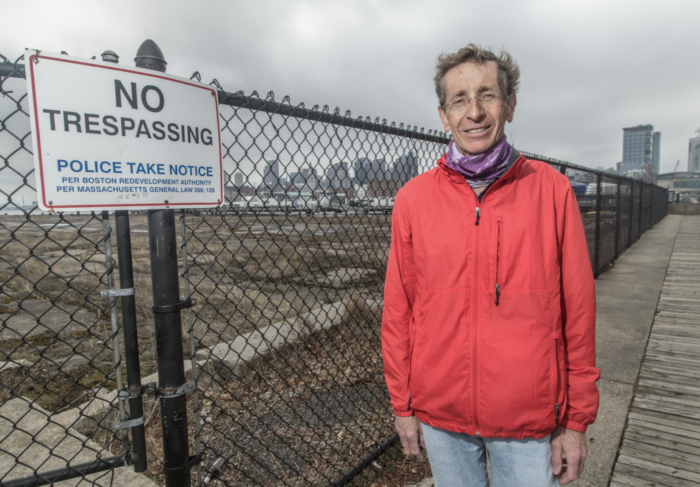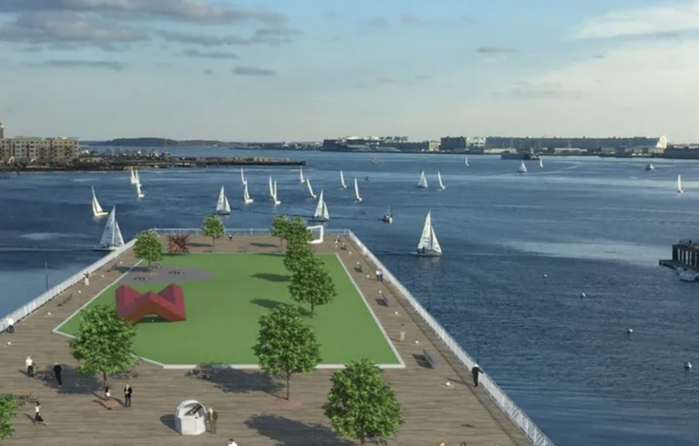
Ed. note: The author is expressing his opinion as a member of the Pier 5 Association, an assorted collection of Charlestown residents who have organized to express concern over the disposition of a modest neglected naval pier in the heart of the historic Charlestown Navy Yard. Christopher primarily blogs at pier5.org and has a “profound interest in the improvement of our harbor.”
President Richard Nixon ordered the closing of the Charlestown Navy Yard In 1972, shortly after the majority of people in Massachusetts (and few voters elsewhere) supported George McGovern in that year’s presidential election. Nixon also won the District of Columbia but took every other state in the union, and in Massachusetts, the consequence of the election, to the Charlestown neighborhood in particular, was immediate and severe, as the Navy yard up until the time of its closing employed thousands of civilian workers with a diverse range of skills.
Except for the National Historic Park which remains an active naval facility caring for the USS Constitution, the remainder of the lands were transferred to the City of Boston via the Boston Redevelopment Authority, a young city bureau structured to both own and develop property as part of an urban renewal program to cope with the blighted urban landscape that was typical of many old industrial cities. The vision for the Navy yard’s recovery was slow to materialize, and a variety of plans were promulgated in the first decade while redevelopment in earnest followed in the 1980s.
By that time, the Gaslight District around nearby Monument Square had become a target of gentrification, and while the Boston Housing Authority-run Bunker Hill projects had begun to age, there had also emerged an extremely diverse multi-ethnic community there.
Meanwhile, the reality of climate change as an emerging threat emerged in this same period, and the principle that a public waterfront should be treated as an asset and used for the betterment of the whole community became a standard for modern urban design. That’s still the case today, and the consensus opinion among current Boston mayoral candidates follows those principles. Yet the Boston Planning & Development Agency (BPDA, formerly BRA) is considering three proposals for the privatization of Pier 5 that will remove the asset from the public realm. It will also place residents at risk considering climate change, rising sea levels, and increasingly powerful storms.
Many of us are interested in waterfront accessibility for the general population, attention to social justice, and continuing to provide amenities to disadvantaged community members. Often forgotten is the proximity of Pier 5 to the largest public housing project in New England. Also unappreciated is that many members of that community regularly fish the waters around this pier daily, although the pier itself has been closed to all public access for more than a decade.
The adjacent Pier 4 is a public amenity, the home of Courageous Sailing Center. This community sailing resource provides free sailing lessons to any child living in Boston and is a world-renowned organization. The current proposals for privatization of Pier 5 immediately to the east of Courageous will produce both wind shadows and encroach on the available water sheet as proposed to the BPDA in the current RFP round. These impacts will reduce room to maneuver for the engineless boats, and all submitted plans threaten viability of the Pier 4 location for this important public asset.

Pier 5 itself is a massive two-acre rectangle reconstructed during WWII for heavy industrial use, and it has been neglected now for half a century, while its concrete and steel components steadily corrode in the daily north Atlantic tides. I put out the call for an artist to conceptualize a collection of abstract ideas for possible repurposing of Pier 5. Morli Wilson answered the call with an intriguing concept piece: superimposed on the 650’ x 125’ footprint of the current pier, it opens additional space on the water sheet while creating a model of an actual estuarine shoreline that is otherwise impossible in a deep seaport hardened shore setting. It also incorporates an approach to waterfront access and activation and includes provocative educational features.
There are other concepts drawn up by Wilson, like shortening the solid pier and substituting a floating breakwater, and positioning a pyramidal glass structure on the edge of Pier 4 that would serve as a natural “reverse aquarium” that would observe the open water under the Courageous boat traffic. Features dedicated to Navy Yard history, renewable energy, and urban outdoor active lifestyles have also been suggested. Our hope is that the work done on this front thus far serves as an inspiration for all to try to improve on this vision. The possibilities are endless, and models to preserve and restore—not merely demolish and replace—are fundamental values that our society needs to embrace if we are to prosper into the future to the benefit of all.
Pier 5 can be used to teach the Navy Yard’s many visitors important lessons, and serve an even greater good beyond that if it is developed in a way that recognizes climate change in earnest. We trust that city leaders will recognize this opportunity and make it happen.
Pier 5 Association welcomes more contributions of design ideas from readers and other friends of the harbor.

